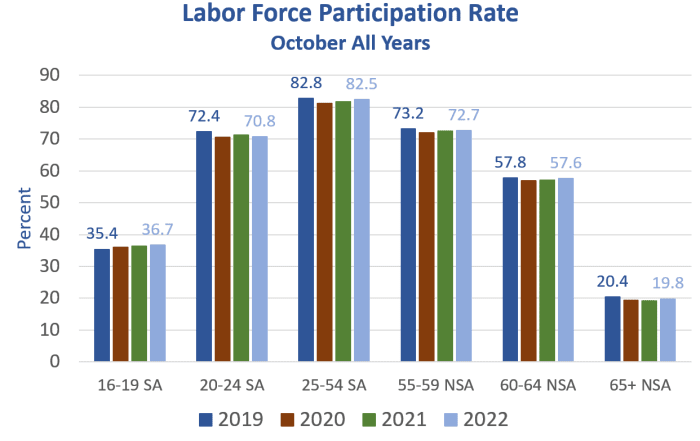Where are older zoomers hiding?
Definitions
- The participation rate is the percentage of the population that is either working or actively looking for work. The labor force participation rate is calculated as: (Labor Force ÷ Civilian Noninstitutional Population) x 100.
- The Civilian Noninstitutional Population is defined as persons 16 years of age and older residing in the 50 states and the District of Columbia, who are not inmates of institutions (e.g., penal and mental facilities, homes for the aged), and who are not on active duty in the Armed Forces.
This article was originally published by Mish Talk.
Labor Market Mystery: Where Are the Older Gen Z Workers?
The Wall Street Journal asks Labor Market Mystery: Where Are the Older Gen Z Workers?
The exodus from the labor force in the pandemic’s early months has mostly reversed, but one group remains oddly absent: people in their early 20s.
For people over age 15, the labor-force participation rate—the share of people employed or actively seeking a job—dropped from an average of 63.1% in 2019 to 61.7% in 2021, and recovered to 62.2% in October. But for people ages 20 to 24, participation that averaged 72.1% in 2019 stood at just 70.8% in October.
That equals a shortfall of about half a million workers in their early 20s when comparing the current size of that workforce with 2019 levels.
In the past, a decline in labor-force participation among younger people has usually coincided with an increase in their school enrollment, generally reflecting higher relative demand for educated or highly skilled workers, especially in a weak labor market, economists said. That’s what happened during the 2007-09 recession—but it hasn’t been the case this time around.
About 1.5 million fewer students were enrolled in college this fall compared with before the pandemic, according to the National Student Clearinghouse, an educational nonprofit. College enrollment had been declining for a decade in part because of concerns about student debt and the rise of alternative credentials.
Labor Market Reflections
That’s a free link is you wish to explore more.
Grad school is up. but overall college enrollment is down.
In response to the WSJ article I created the lead chart. Participation is down in all but age group 16-19.





